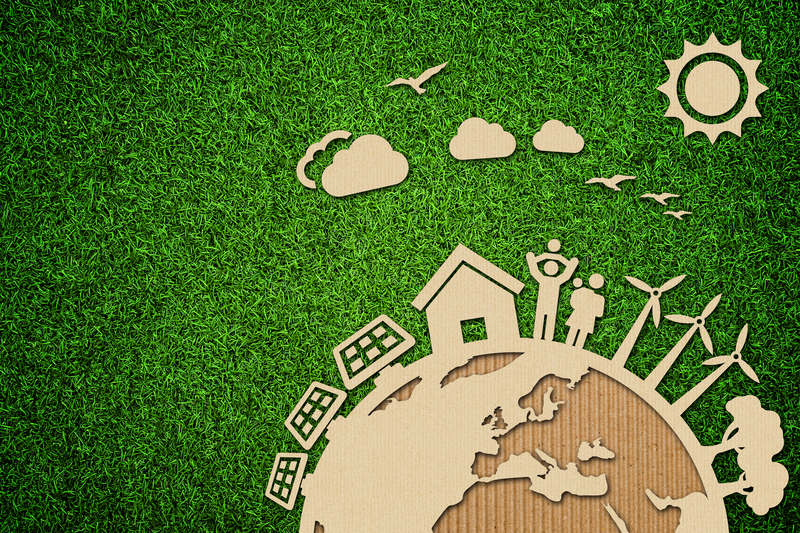Reducing Contamination Through Careful PPE Waste Disposal: Essential Strategies for Healthier Environments
The global health landscape has dramatically changed in recent years, boosting the demand and reliance on personal protective equipment (PPE) in hospitals, industries, and even everyday life. While PPE is vital for preventing the spread of infections, improper PPE waste disposal has emerged as an urgent environmental and public health challenge. This comprehensive guide sheds light on how reducing contamination through careful PPE waste disposal protects people, wildlife, and our planet.

Understanding PPE Waste and Its Environmental Risks
Personal Protective Equipment (PPE) includes masks, gloves, gowns, face shields, and other gear designed to prevent the transmission of pathogens. Whether used by healthcare workers, factory staff, or the general public, these items become contaminated after use, turning into hazardous waste.
- Single-use PPE: Intended for disposal after use; most contain plastics that are not biodegradable.
- Reusable PPE: Can be washed and worn multiple times but still contributes to waste streams at the end of life.
The rise in PPE usage during events such as the COVID-19 pandemic has caused a surge in waste volume and contamination of natural habitats. Reductions in contamination through proper PPE waste disposal are critical, as studies show that discarded PPE can linger in the environment for decades and leach toxic substances.
Health and Environmental Hazards of Improper PPE Waste Disposal
Improper handling and disposal of PPE waste can lead to multiple risks, highlighting why minimizing contamination is so important:
- Spread of Infections: Used PPE can harbor bacteria and viruses, which may spread to waste handlers, healthcare professionals, or the public if not managed correctly.
- Wildlife Endangerment: Animals mistakenly ingest or become entangled in discarded masks and gloves, leading to injury or death.
- Microplastic Pollution: Many PPE materials break down into microplastics, contaminating water sources and harming aquatic life.
- Strain on Waste Management Systems: A surge in medical waste can overload existing infrastructure, risking improper treatment and disposal.
Therefore, reducing contamination by implementing effective PPE waste disposal practices is not just an item on the checklist--it is a global responsibility.
Best Practices for Reducing PPE Waste Contamination
1. Segregation at the Source
The golden rule for effective PPE waste management is proper segregation:
- Designate color-coded bins: Place clearly labeled bins at critical locations for PPE waste collection.
- Separate infectious waste: Separate PPE used in high-risk areas (e.g., hospitals) from general waste streams.
- Immediate containment: Used PPE should be carefully disposed of right after use, without delay or mixing with general trash.
Reducing contamination through careful PPE waste disposal begins right at the point of discard.
2. Safe Handling Protocols
Waste handlers and custodial staff must protect themselves and minimize exposure risks:
- Wear gloves and masks: Always don PPE when handling PPE waste.
- Avoid direct contact: Use tools like tongs or grabbers to pick up items.
- Follow hand hygiene: Wash hands thoroughly after contact, even with gloves worn.
Training and clear procedures ensure workers do not inadvertently spread contaminants while collecting or moving waste.
3. Secure Storage and Transportation
Once collected, PPE waste must be securely stored and transported to prevent leaks, spills, or unauthorized access:
- Use sturdy, leak-proof bags: Double-bagging is recommended for high-risk PPE waste.
- Label clearly: Mark containers with hazard warnings and content descriptions.
- Transport directly to treatment facilities: Minimize intermediate storage or handling that could increase contamination risks.
4. Treatment and Final Disposal
The ultimate goal of PPE waste disposal is decontamination and neutralization of hazards. Key methods include:
- Autoclaving: Medical PPE is often sterilized through high-pressure steam before further handling.
- Incineration: High-temperature burning destroys pathogens and reduces waste volume, though it must be managed to prevent air pollution.
- Landfilling: Treated non-infectious PPE may be disposed of in sanitary landfills, but not before proper decontamination.
Innovative technologies, such as pyrolysis or recycling for certain clean PPE materials, are being explored to minimize PPE waste contamination and environmental burden.
5. Public Education and Engagement
Encouraging safe disposal practices among the public is vital for reducing contamination:
- Clear instructions: Offer guidelines on properly disposing of household PPE, such as bagging masks and gloves separately.
- Awareness campaigns: Use signage, social media, and news outlets to reinforce messages about contamination risks and correct disposal behaviors.
- Accessibility: Ensure adequate disposal points in public areas like transport hubs, parks, and shopping centers.
Innovative Approaches to PPE Waste Reduction and Disposal
Recycling and Material Recovery
Although most single-use PPE is not traditionally recyclable due to contamination risks, new projects worldwide are transforming clean or sterilized PPE (such as certain types of masks and gowns) into raw materials for roads, building blocks, or even new protective gear. These initiatives contribute to reducing PPE waste and contamination in the long run.
- Pilot recycling programs: Some hospitals partner with recycling companies to process uncontaminated PPE waste selectively.
- Thermochemical processes: Technologies like pyrolysis convert plastic PPE into fuels and other materials.
Composting Biodegradable PPE
The development of biodegradable PPE--made from plant-based materials--enables composting under controlled conditions. While not yet widespread, these alternatives could drastically reduce landfill and microplastic pollution, further advancing PPE contamination reduction strategies.
Policy and Regulatory Solutions
Governments play a crucial role in ensuring safe PPE waste management:
- Setting disposal standards: Adopting clear regulations for segregation, transportation, and destruction of PPE waste.
- Supporting R&D: Funding research into sustainable PPE and improved waste treatment technologies.
- Enforcement: Imposing penalties for illegal dumping or burning of infectious PPE waste.
Reducing PPE Waste Generation: Prevention is Best
Smart Purchasing and Inventory Control
Careful assessment of PPE requirements and stock management helps minimize unnecessary procurement and eventual disposal. Hospitals, offices, and industries can use predictive analytics and usage tracking to optimize supplies. This reduces both costs and the environmental footprint.
Promoting Reusable PPE Where Safe
In some settings, investing in high-quality reusable PPE (e.g., washable gowns or masks) can sharply decrease waste. Proper protocols must be in place for decontamination and validation, but where feasible, it's an effective strategy for reducing PPE waste contamination.
Education and Behavioral Change
Training staff and educating the public about the importance of correct PPE usage and discarding practices can lead to significant contamination reduction:
- Signs and instructions near disposal bins
- Regular staff refreshers on waste handling protocols
- Educational outreach for local communities and schools
Global Case Studies: Success Stories in PPE Waste Contamination Reduction
Singapore's Hospitals
Singapore implemented advanced waste tracking and automated collection systems during the COVID-19 outbreak, ensuring immediate containment, secure storage, and 100% incineration of infectious PPE. This significantly minimized workplace and environmental contamination.
United Kingdom's Recycling Innovations
A UK pilot program collected used face masks from hospitals, sterilized them, and processed the materials into building supplies. Innovative sorting and cleaning technologies ensured safety, offering a model for scalable PPE recycling initiatives.
India's Community Education Campaigns
Faced with PPE litter on streets and rivers, Indian cities partnered with NGOs to run widespread public education campaigns. These efforts, combined with installing dedicated PPE disposal bins, greatly reduced contamination of shared spaces and water bodies.
The Cost of Inaction
Ignoring proper PPE waste disposal has severe consequences for health, wildlife, and ecosystems:
- Disease outbreaks: Improperly managed PPE can serve as a reservoir for germs in communities and hospitals.
- Environmental damage: Wildlife suffers from accidental ingestion and entanglement, while microplastics invade food chains.
- Public nuisance and waste of resources: Littered PPE degrades cityscapes and increases cleaning expenses.
In short, practicing and promoting careful PPE waste disposal is a crucial step toward reducing global contamination and securing a healthier future.

How Can You Help? Your Role in Reducing PPE Waste Contamination
Whether you are an individual, employer, or policymaker, you can contribute to a safer environment by:
- Separating used PPE from regular trash at home or work
- Following your local community's PPE waste guidelines
- Avoiding single-use PPE when reusable options are available and safe
- Educating others about the importance of proper PPE disposal
- Reporting illegal dumping or mishandling of PPE waste
Conclusion: A Clean Future Depends on Proper PPE Waste Disposal
Reducing contamination through careful PPE waste disposal is a multi-pronged battle that requires the vigilance of healthcare institutions, governments, industries, and the general public. With growing awareness, education, innovation, and responsible action, we can contain the threat PPE waste poses and promote a cleaner, healthier environment for all living beings.
By following the best practices and supporting new solutions, you become a part of a vital global movement--one mask, one glove, one small act at a time.
Remember: Proper PPE waste management today paves the way for a sustainable tomorrow.